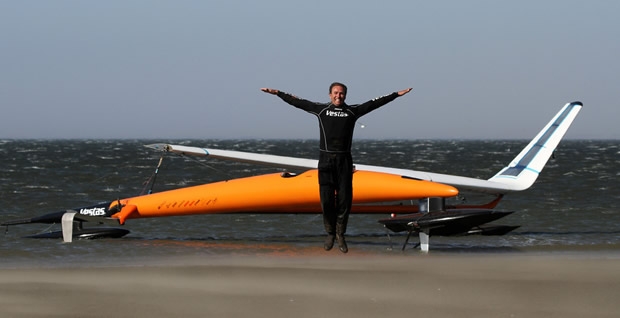
10 knot jump in world sailing speed record in 10 days
Do we have any superlatives left? Possibly not. If taking the World Speed Sailing Record over a 500m course up from 55.65 to 59.23 knots Friday before last was not a big enough leap in the record, Paul Larsen and his Vestas SailRocket this Saturday launched the record into outer space when they clocked a unimaginable 65.45 knot average speed off the beach at Walvis Bay, Namibia.
These records have yet to be ratified by the World Sailing Speed Record Council, but given that this record has typically gone up in knot or half knot increments over the last decades, to have packed almost 10 knots on to kiteboarder Rob Douglas’ previous record over the last 10 days represents the most groundbreaking moment we’ve ever witnessed in our rather long career in yachting journalism.
For Larsen, sailing’s own Chuck Yeager (the first man to go supersonic), it is a case of ‘job done’, although he reckons there is still fuel in the tank. While he managed a peak speed of 67.76 knots on ‘the run’ on Saturday, he believes a 70 knot peak speed still to be possible.
But on Saturday Larsen exceeded even his own demanding expectations: “I was hoping for a 62. I thought that would have been good,” he admits.
While their previous 59 knot record occurred in one take, Saturday’s took considerably more effort and only happened after two runs that were in the ballpark, but not quite good enough.
Larsen explains: “The first run we were aiming for 60 knots and it was a 63 knot peak and a 58 average, but it sagged off a bit in the middle, so it was still fast but it didn’t string the average together.”
On the second run he came close to totalling Vestas SailRocket before he’d even started. “That was pretty dangerous because the boat took off and accelerated towards the beach. It jumped into a stable state at around 30 knots with the rudder on full bear away lock, fully side ventilated which you have every time you see an Extreme 40 going around a top mark. So the only way to correct the rudder was to unwind it, and it is a highly geared rudder, probably eight turns from lock to lock, so I am dialling the lock off which is allowing the boat to turn even more directly into the beach and it is also shedding drag so the boat is accelerating and then when the rudder attaches flow it gives another kick towards the beach again...and then the only way to get it to bear away is to sheet it in... I just got away before we hit the beach.”
So he turned on to the second run with the wing stalled and the boat didn’t have enough time to build apparent. “I had to ease the wing out quite a bit to re-attach the flow and when it hooked it in and got going again it was bang up over 60 knots, but once again it was a 61 knot peak but only about a 54 knot average.”
Coming back up to do a third run, Larsen says he was aware they were not doing clean runs. Meanwhile the wind, which had been up and down from the low to high 20s was beginning to stabilise in the 27-31 knot range, solidly 28-29.
Even the third, and ultimately world record setting, run had a nerve wracking beginning, when Larsen stalled Vestas SailRocket and was struggling to get her going again. “With the wing stalled, the boat was dragging sideways and slowly bearing away, but the boat gets a rolling moment when the wing is stalled, it is no longer lifting and the concept isn’t working. So the boat started rolling to leeward, like it was trying to fly the main hull and of course there isn’t the volume in the leeward float to support it, so the leeward float was going under and you go down a wave - because by this stage we are 300ft off the shore or something - and the leeward wing extension is digging in like a chisel and as it sticks in the boat is making leeway and the whole thing is burying and the back pod was coming 1.5ft out of the water and I am just waiting for it to go SNAP. And something did go ‘pop’.”
After this hiatus Larsen managed to get Vestas SailRocket going and despite the ‘pop’ set off down the course.
“When the wing finally came up out of the water, I was just checking wondering ‘did something break? Has something ripped off and its dragging in the water?’ At one point I actually tried to abort the run and turn the boat into the wind, which I typically can’t get back out of, but just as I did that the boat picked up and shook itself free and took off.
"As I was accelerating into the beach I was just assessing it, going ‘can I go? Is it good? Is it good?’ and it all looked clean, so I took off down the course like a scalded cat. I was straight up into the 60s, but the boat was yanking around. Normally I set it up on a course and I can almost take my hands off the wheel, it just locks in and it goes, but this time it was kicking around a lot more and it took a lot more wheel work to keep it straight. It just felt like it was alive, it wasn’t just cruising down the highway at 55 knots, like it does normally, all of a sudden the thing was showing its claws and it was a lot more lively. The way it was pulling around, it felt like either the shrouds or the beam stays were loose. It felt like it was sloping forwards and then yanking me in that direction and then I’d bear away. I don’t know exactly what it was, but I was just checking for damage all the time."
However somehow this was fast, very very fast. "I thought ‘just hang on to it, hang on to it!’ I was pretty quiet this time – I don’t even think I spoke on that run, because I was so focussed on where it was going. And you had to get in close for the shallow water because we were in rougher conditions and there was a space there where it went pretty mental - it was 68 knots for one second - and you just hang on to that and then another gust came later in the course and I stayed there for a little bit too long, but then the pod just started flying so damned high, metres in the air, that I had to sheet off, bring it down and stop.”
Larsens says that the run wasn’t as out of control as it sounds, more a case of his wondering if he was in control. “The boat was alive and the forces were big and real. She looked after me down that run, but I was paying full attention to her...”
Larsen knew it was a fast run, but prolonged the agony, hauling Vestas SailRocket back up the beach towards the team's timing hut before he dared look at the GPS. With the team all gathered around – including some new additions this week - such as designer Malcolm Barnsley, who launched the SailRocket campaign with Larsen 10 years ago – Larsen wrote the average, Jeremy Clarkson-style backwards in the sand...
“When I saw that number it nearly sat me on my arse out there,” he recalls. “I saw the 65 and I thought ‘bloody good peak – what’s the average? It must be over 60?’ And then the 67 came up as the peak and it was like ‘hang on..!’ It was our day to dominate but that number at the end, we were going for it of course, but that just blew us away.
“To sit there and try and comprehend that: 65 ^%$^%$ knots as an average... After 10 years, we had all of the plates spinning, the boat fully trimmed in, the WSSRC on site and we even had a guy with a GoPro on a RC plane sitting there. We went out for that run and it all came together. I have got this incredible respect for this boat. We were sitting there wondering if it was ever going to do it and now we sit there going ‘what a beautiful, beautiful craft you are’.”
Compared to the previous record run, the team had made a few tweaks to Vestas SailRocket. Because they had the alarming issue of the pod taking off, despite having the flap control line completely eased, to relieve this further they removed the flap control line altogether. “I thought we might as well have no friction in the system, so we took the line off the flap and let it float freely on the overboard wing extension to try and generation zero lift.”
They also articulated the main beam back a bit (similar to moving a rig aft) in order to relieve the rudder of some load and to improve the balance. In addition they adjusted the foil fractionally – and to give some indication of the precision with which this can be done - it was changed from 0.8° positive nose down by 0.4°...
“We do that with shims, feeler gauges,” says Larsen. “We are just moving in that direction, of loading the foil less near the surface of the water. Although we have got a fence there, because we are riding at the fence, there is still the possibility as we are going through that that there are pockets of air that are trying to get down the foil. So if we unload the upper section of the foil a little bit more, less air gets down which means the rest of the foil is working properly, which means there is less area loading, which means there is less chance of cavitation...”
Winding back the clock a little, adding this fence to the foil (just above the foil's 90° turn) was designed to stop the suction side of the foil from ventilating and seems to have been what helped launch Vestas SailRocket from the low 50s up to the giant speeds she has been achieving over the last 10 days. “That fence just transformed the boat,” confirms Larsen. “It is not rocket science, because fences have appeared on things for a long long time. It is one of the tools available to a hydrodynamicist. It is basically a divider that separates quite critical aspects of the foil, especially because we’re running a quite highly loaded foil and we don’t want to have more foil than we need in the water, so when it is all working at top speed it is absolutely maxed out and that just turned it on like a light switch.
“The boat just rides exactly at that fence now. If you moved that fence up a few inches it would ride there. And this is the first fence we have stuck on, so Wwe haven’t played around with it a lot and if you were going to look at performance gains, move that fence a little be one of the areas you’d further explore.”
Larsen reckons that there is still more to come from Vestas SailRocket in her current set-up. They could make the rig stand-up more which would help the pod from flying up as well as delivering more power. That might enable to them to hit 70 knots, he believes. While their ventilating foil is supposed to max out at 65 knots, he also feels that has more to give. “We didn’t know what the nature of the drag would be like and it seems it is a bit more progress than this brick wall we were hitting back at 52.”
But it is all the Wild West still, shooting in the dark. “I didn’t know it would do 65 knots yesterday, I didn’t know exactly what was going to happen. I knew that we had to push, we had to give it a real good nudge. After the first couple of runs, when they weren’t clean I started to get bloody minded and just wanted to really monster it, to just get it right. But now I think this boat could get over 70 knots and I don’t know where it is going to stop...”
So the era of boats being the fastest sailing craft in the world has finally returned with Vestas SailRocket achieving a speed almost 10 knots faster than the fastest kiteboard. Larsen points out that this is because he approached the record with entirely different technology. “They have shown how fast you can make a kiteboard go and they are incredible athletes and I have been really enjoying watching them, like I have enjoyed seeing the windsurfers getting up into the 50s. I know those guys and they are absolute machines to behold and I have the utmost respect for them. But we attacked this from a whole different way and we knew that this potential was out there and we always believed we were going to go somewhere where they wouldn’t follow. People can come up with ideas now to take this record out and it will be interesting to see where it goes from here...”
A few days are left before they shut up shop and come home and in the remaining days, the helm on Vestas SailRocket will be handed over to Larsen’s partner and one time ocean racer Helena Darvelid to see if she can break the women’s world record. This will be no mean feat, for she hasn’t had the time in the boat that Larsen has had, so it will be a case of fast tracking her. Fortunately Vestas SailRocket 2 is fitted with an aft facing passenger seat, so poor Helena will have to put up with having an agitated Australian and proud boat owner barking orders while riding shotgun.
“If Helena wants to do it, I think she should take the boat and take control of it and she should do it without me chaperoning her down the course. But on the other hand she needs the opportunity for her to learn so it is unfair of me to just put her in there on a 25-30 knot day and say ‘go for it’ because in that case it is daunting enough being in the front seat if things aren’t working and I want to have very clear communication with her about what to do. For example if the boat took off with that rudder stalled situation she mightn’t have the feel for the boat that I have developed over 60 or so runs.”
Thursday this week is looking windy, but will they have enough time to get Darvelid up to speed before then? Watch this space.
After this Larsen says he wants to take Vestas SailRocket on a promotional tour. “I want to use it for forces of good and not evil! It would be great to promote speed sailing among kids and schools and stuff like that. It would be great to have it turn up at Weymuth Speed Week and put that back on the map again as a place where people can go and have ideas and bring them to fruition and sit among similar minds and talk about it. It would be great to raise the profile of that event again. I am just glad that it is still going. So doing something like that would be just fantastic.”
There is also the prospect of a celebratory homecoming party, but, from the sublime to the ridiculous, while Larsen should be appearing on the front cover of Time magazine and be headline news, he is in fact going to do some training in the mountains for his next adventure. This will be decidedly less high speed, joining Nick Bubb and co recreating the famous Shackleton voyage in an open boat from Antarctica, 350 miles away to Elephant Island and then a further 800 miles on to South Georgia...

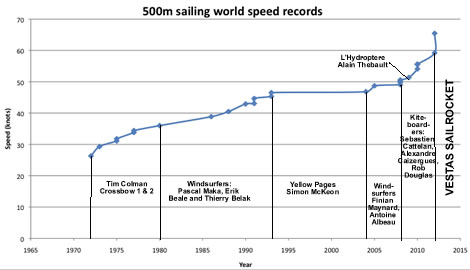
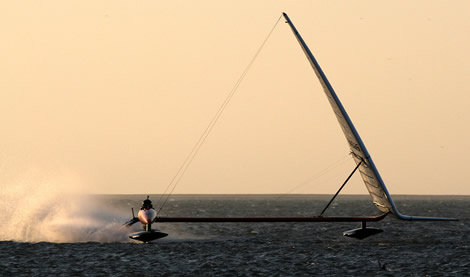
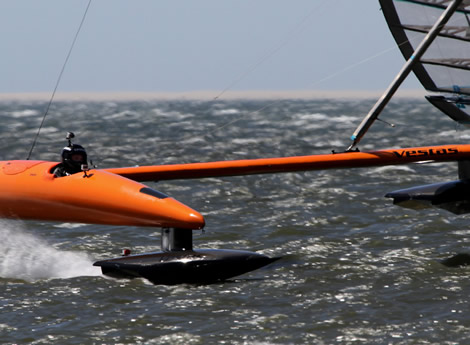
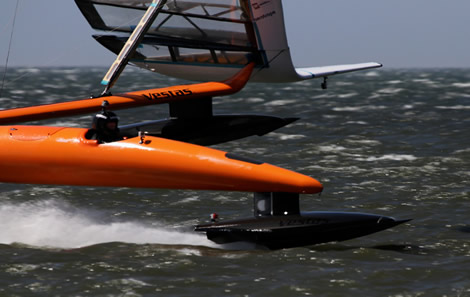
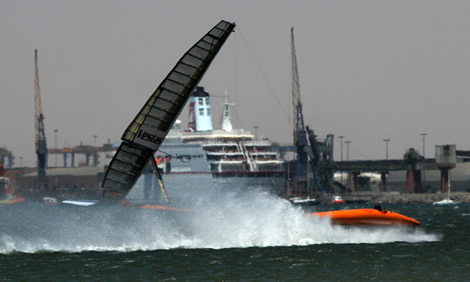
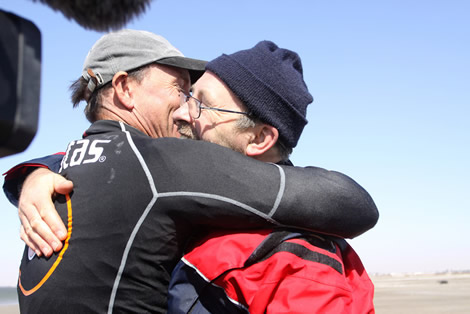
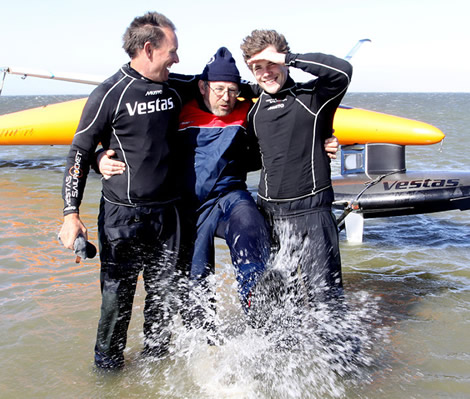
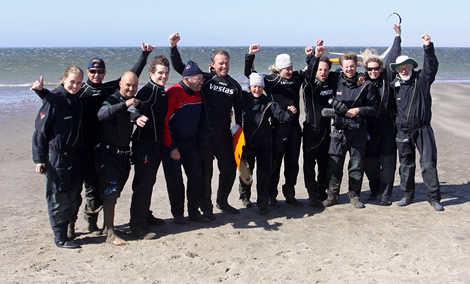
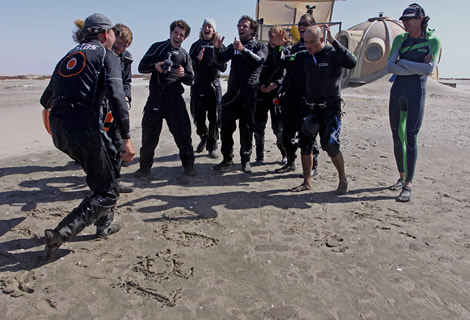
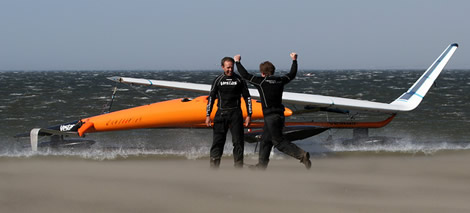
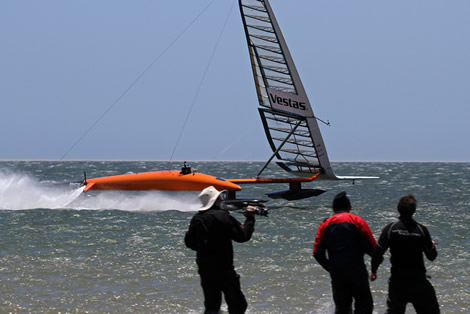
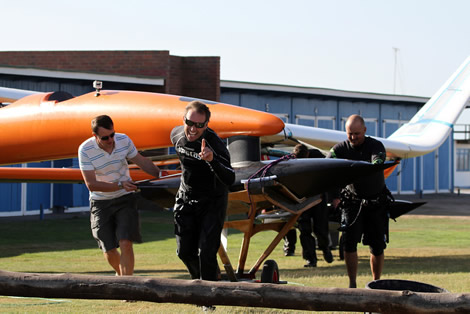
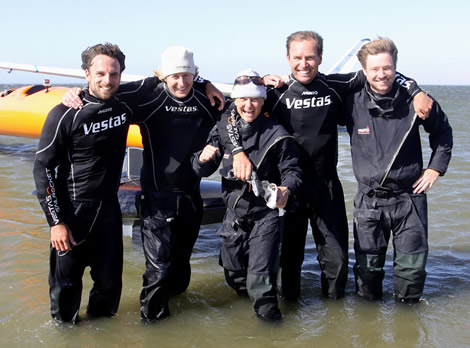







Latest Comments
Add a comment - Members log in